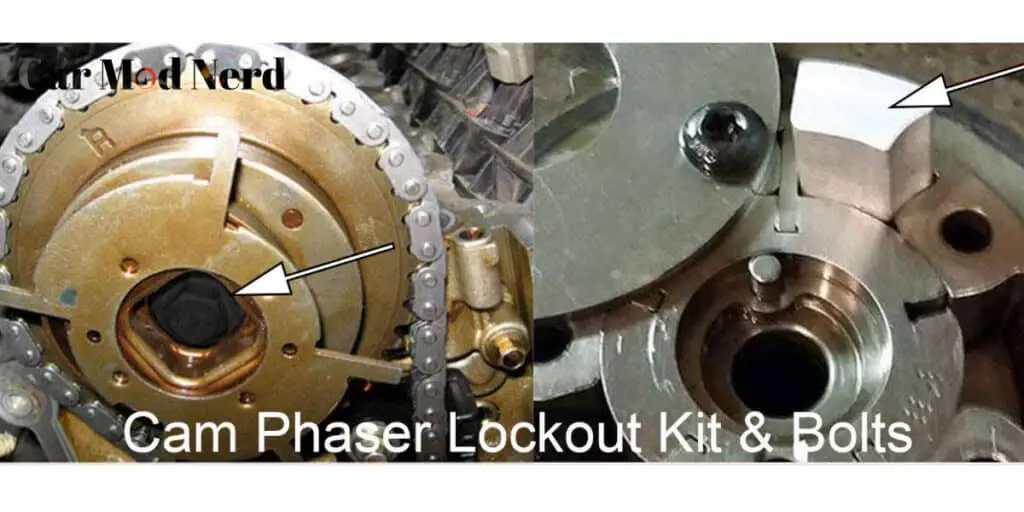What causes low oil pressure at idle? Damaged oil gauge switch, wrong engine oil, faulty sending unit, leak in oil line, deposit in oil filter and pump or even worn out engine parts can be responsible.
A common cause is the oil pressure sending unit. The sending unit is a small gauge that sends oil pressure information to the dash gauge. It is attached to the engine block. The sending unit may fail if the gauge is showing low oil pressure. Replace the sending unit.
Do you know how to get a free courtesy car from your repair shop? Here’s my step by step guide on it.
Low Oil Pressure At Idle – What’s Happening?
The lubrication system should have minimum oil pressure to lubricate, cool and clean components, such as bearings and pistons. Pressure and flow (controlled by the relief valve) work together to lubricate parts under the valve cover and at the top of the engine.
To achieve this, the oil pump sending unit must push oil through tight channels (relief valve) under galleries and bearings. These tight channels build up pressure in the system because they limit the rate of oil flow. The faster the engine operates, the greater the rate of oil flow and the higher the pressure.
So. the engine components will be deprived of much-needed oil if the lubrication system can’t maintain sufficient oil flow or pressure dips when it shouldn’t.
it’s critical that you monitor your oil pressure gauge, oil pressure sending unit and do routine maintenance. Stop your car immediately if the low oil pressure light goes on. Get a manual to learn more about the process.
How Much Does It Cost To Fix Low Oil Pressure?
If it’s the oil pressure sensor issue, you’ll need to get one for about $70 from a local repair shop depending on your vehicle model. Getting one online can be cost-effective though. See online prices here. Then comes the installation cost of installation, which is $80 to $90 on average. So roughly the total would be $130 to $150. You can save the installation cost by doing it yourself using the right repair manual.
If it’s an oil tank leak then an engine oil leak stop is the cheapest option to try for about $15. I found this one reasonable. I strongly recommend trying leak stop before getting help from a repair shop.
What Is An Ideal Oil Pressure
The oil pressure showed on the pressure gauge is the amount of force required by the pump to make the oil circulate and produce enough lubrication. To show that the lubricating procedure is working properly, that gauge must reflect the maximum and minimum levels. If the pressure level falls far below the minimum or gets way high, you’ve got a problem. Before getting your hands dirty ensure you are using an accurate oil pressure gauge, see details here.
Older vehicles models have a visible oil pressure indicator screen that reads between 50 and 60 pounds per square inch (psi). Psi is the measure of force per unit area. Low oil pressure warning lights are now standard on newer cars, and they glow when the oil pressure falls below 5 to 7 pounds per square inch (psi).
The oil pressure is the force pushing the motor oil through the oil pump to joints, pipes, and filters. It is determined by the resistance level the oil encounters as it runs through the engine’s channels.
You should know your oil pressure at all times. If you notice low pressure, have it checked right away because it might lead to costly repairs.
Causes Of Low Oil Pressure At Idle, Diagnosis And DIY Fix
- Low Oil Level
- Too low Or Too high Oil Viscosity
- Faulty Oil Pump
- Clogged Oil Filter
- Engine Starting To Wear
As a driver, you know certainly that engine oil is vital for maintaining the engine’s optimal running condition. It’s the one who makes sure the engine’s moving parts are well-protected and greased.
To ensure that the oil reaches all engine parts, the pressure needs to build up. When oil flows through the openings within the engine, this pressure builds up. For this reason, when your oil light turns on and you notice low oil pressure at idle speed, you are experiencing an oil pressure problem.
Let’s find out the common oil pressure problems, step-by-step diagnosis, and how to fix them. I strongly recommend getting your vehicle-specific manual after buying the car. It’ll help you diagnose and understand what’s wrong before even going to the repair shop.
Low Oil Level
One of the major causes of low oil pressure is when the oil level drops below the lowest dipstick mark. Even if you had just had your oil changed, this could happen at any moment.
Engines burn oil faster. Worn piston rings, worn bearings, and leaking seals cause it. Similarly, you may discover that you have an oil leak. So, you may see a rapid decline in oil pressure depending condition and age of your vehicle. Pressure gauge with accurate reading can save you tons of trouble on the go.
Step by Step Diagnosis Guide for Low Oil Level
Step 1
Listen for engine noise and vibrations. Engine oil keeps hundreds of engine components lubricated so they may glide over each other smoothly. Insufficient oil in the crankcase can cause grinding, clunking, or pounding noises by failing to lubricate all essential components adequately.
Vibrations may also increase if engine parts do not receive the proper amount of oil. Although all cars now have rubber engine mounts, vibrations can still be felt during a test drive.
Step 2
The engine may also overheat. The oil in the engine transfers heat away from the hot sections of the engine, such as the cylinder walls, camshaft, and head area. When oil cannot flow freely, heat buildup, visible on your engine’s temperature indicator. The radiator fan will turn on more frequently as well.
Step 3
Keep an eye on the indicators of poor engine performance. Such as a drop in fuel economy, a loss of power, or the engine stalling. Oil will strain to get to vital parts of an engine, such as the camshaft and cylinder walls if the oil pressure lowers. Read my guide on camshaft failure symptoms here.
As a result, acceleration is sluggish, especially at a lower or idle speed. The oil pump pressurizes the system, even more, when the speed rises, allowing oil to pass through the barrier.
Step by Step Fixing Guide for Low Oil Level (DIY)
Step 1
Inspect the oil level, if the oil level is low, the engine could burn oil, leak oil, or be neglected. Adding oil may temporarily ease the low oil pressure problem, but the problem may recur unless you maintain the oil level appropriately.
Step 2
If the engine is leaking oil, a new gasket or seal is recommended to stop the leak. If the valve guides, rings, and cylinders are worn, a wet compression test or leak-down test will reveal this. Here’s my guide on common oil leaks and quick fixes.
Step 3
Installing new valve guide seals without lifting the head would be the most cost-effective solution with worn guides. However, the best repair is pulling the heads and having the guides aligned or changed for giant valve stems.
A comprehensive overhaul would be required if the rings and cylinders were worn out.
Too low Or Too high Oil Viscosity
Another common cause of low oil pressure at idle is that you’re using the wrong type of oil. Low oil pressure can suggest that the thickness of the oil isn’t right. Temperatures fluctuate and vary depending on the season, many modern engines use multi-grade engine oils. The multi-grade oil can flow thinly in cold weather and thicken as the temperature rises. And effectively maintain its lubricating capabilities throughout the year. Are you using any oil additives? Is it the correct one? Learn how to check compatibility here.
Low viscosity creates less resistance to flow through the system, which the pressure gauge or oil pressure sensor translates as lower pressure. A high viscosity grade may cause more resistance from the oil being pumped, resulting in a lack of lubrication in the system and, as a result, lower pressure.
Oil viscosity refers to how easily motor oil flows around the engine at any specific temperature.
One of my friends recently asked, can I use 5w20 instead of 5w30? I said No. Here’s my explanation to them.
Step by Step Diagnosis Guide for Oil Viscosity Issue
Step 1
Check for factors such as the OEM recommended lubricant viscosity selected, operating temperatures, the breakdown of viscosity index, and additives.
Step 2
The presence of impurities such as glycol and soot also can influence oil viscosity in an engine. Always get your engine oil from trusted sellers. Here’s a case study on using Castrol and Pennzoil same grade motor oil.
Fixing Guide for Oil Viscosity Issue (DIY)
Check the oil’s condition and make sure it’s the correct viscosity for the job. In the owner’s manual, vehicle manufacturers prescribe specific motor oil viscosities, and yes, they know better.
Using a lower than required viscosity reduces flow resistance, which the vehicle’s pressure sensor may perceive as low oil pressure. Using a higher than suggested viscosity creates more resistance to flow, leading to low oil pressure and insufficient engine lubrication. Dilution of the fuel might also cause problems.
Oils of higher viscosity, such as 20-w-50, straight 30W, and 40W, may help maintain adequate oil pressure in hot weather, but they are thicker oil for colder climates driving and might cause start-up lubrication issues.
Light viscosity oils, such as straight 10W or 5W-20, may help with cold-weather starting and lubrication, but they may be too thin to maintain proper oil pressure in hot weather driving. As a result, most manufacturers now recommend 5W-30 for year-round use in current engines. Read my comparison of 5w-30 vs 5-20 here.
Here’s my guide on choosing the best engine oil.
Faulty Oil Pump
Oil pump in a vehicle plays critical role. Its purpose is to circulate the engine oil throughout the system using a sending unit. When a car’s engine pump breaks, the oil pressure dips.
The oil pump ensures engine oil is poured into the engine’s oil passageways, ensuring that the engine is correctly lubricated at all times. This oil pump will not pump enough oil to keep the engine lubricated and maintain the proper pressure if it cannot do its job. Download details from here.
Diagnosis Guide for Faulty Oil Pump
When the oil light flashes, it may indicate that your oil pump isn’t working correctly. Check the oil pump to ensure the correct diagnosis of the low oil pressure problem.
Incorrect installation, hot oil due to oil cooler issues, oil pollution, improper oil maintenance, or operating the engine with insufficient oil can all lead to oil pump failure.
Oil pumps can also break down with time and with use. The oil pump controls oil pressure in vehicles. So, the low oil pressure warning light will illuminate first if the pump is malfunctioning in any manner.
The oil pump may be worn if the oil level on the dipstick is between add and full, but the engine is noisy. Check for internal leaks in a worn pump because this will prevent it from producing the required pressure.
Inspect the oil pump, measure clearances by opening the pump lid. Check for scoring or other damage as well. Something entered the pump and jammed it, as shown by a damaged pump drive.
If the pump seems in perfect condition, the rod and main bearing clearances should be checked for deposits. Inspect the clearances on the main bearing closest to the pump since it has the most impact on pressure.
Also, the clearances on the rod bearing furthest away, since this will show the greatest wear. If the bearings become worn, they must be changed.
Low oil pressure can be caused by massive leaks and clearances anywhere within the engine’s oil supply system.
Read my guide on how antifreeze coolant is damaging your engine here.
Fixing Guide for Faulty Oil Pump
When the oil indicator flashes, it’s a warning that your oil pump is faulty. Replace the pump if it is worn or damaged. You can temporarily repair this by using a higher viscosity engine oil, but if you want a long-term solution, you’ll need to replace the worn-out oil pump with a new one.
Clogged Oil Filter
Dirty oil can result from poor car maintenance and not following the manufacturer’s suggested oil change period. Old oil also loses properties and abilities like temperature-viscosity properties, the ability to protect the engine from wear and corrosion, and the ability to clean the engine. Scan your vehicle regularly to be on the safe side, here’s how to do it. You don’t do your own, you pay someone for doing it later.
A clogged engine will be deprived of oil, causing the engine and its components to wear out. It could be the cause of low oil pressure when the engine is idle.
Filters in the engine oil can help to remove pollutants, dirt, and other debris. These particles can build up after some time and can lead to catastrophic engine damage if not filtered.
Filters can only absorb a specific amount of dirt before they need to be replaced. If your filter clogs, less oil will circulate the engine, resulting in a pressure drop.
Diagnosis Guide for Clogged Oil Filter
Inspect the oil filter for any obstruction or blockage. It could result in a decline in oil pressure. Pressure relief valves are part of the oil filters. So, if the pressure valve is damaged, the oil will freely flow through reducing pressure.
Look out for engine sludge, which forms if you don’t change your oil regularly. Engine sludge can get lodged in a variety of places. It can deplete the oil supply and lubricate all the engine’s working parts.
Fixing Guide for Clogged Oil Filter
When oil breaks down and gathers on the engine, engine sludge can form. Make it a practice to change your oil regularly to prevent overspending on repairs.
Engine Starting To Wear
The pump produces oil pressure, pushing oil through the oil channels and the small spaces between the wear surfaces of the engine. So, these spaces grow more prominent as the engine wears off. The clearance between the bearings will be increased. It allows oil to flow freely through these spaces, causing the pump to lose its ability to maintain oil pressure at idle.
The oil pump has impellers through which the oil flows as the engine turns them. Low oil pressure can occur at idle because the impellers move slower as the engine spins, less fluid being pumped.
When the engine gets worn, it pumps insufficient fluid into the pressured channels. Severe wear lowers the flow rate resistance, reducing pressure.
Diagnosis Guide for Engine Wear
To find out what’s wrong, you can use a pressure gauge. If the engine oil pressure is low at idle, it could be worn out. If your dipstick shows that you have adequate oil and that the viscosity is correct, it could be a warning that your engine is wearing.
An engine has many moving parts through which oil needs to flow smoothly. In particular, inspect the engine bearings, as they are prone to wear at high mileage, resulting in a drop in oil pressure.
As a general guideline, maintain the engine health of frequently driven cars or trucks. Reduce friction when you can. See details here.
Fixing Guide for for Engine Wear
The issue can be resolved by using high-viscosity oil. If you’re currently using 5W-20, you can replace it with 10W-30. The slightly higher oil viscosity can help compensate for the engine’s more significant gaps and increased bearing clearance. It can help restore normal oil pressure and allow the pump to keep the proper pressure.
How Oil Pressure Works

When the engine starts, oil pressure helps to lubricate the engine. Oil pressure is created when oil is pushed from the oil pump into the engine. The oil is then distributed to the distributor and other places within the engine.
Low Oil Pressure At Idle FAQ
Several reasons can contribute to low oil pressure at idle. In most cases, it’s just a faulty oil pump or the wrong oil viscosity grade. Malfunctioning oil pump or broken oil pump drive belt can be responsible too. Diagnose faulty oil lines and damaged oil cooler too.
However, whether or not you have low-pressure readings or alerts, you should keep an eye on your engine oil and stick to the recommended oil change plan. Oil is essential for keeping your engine and its components oiled. If you find that your oil pressure is low, you should check it immediately to avoid a severe problem.




